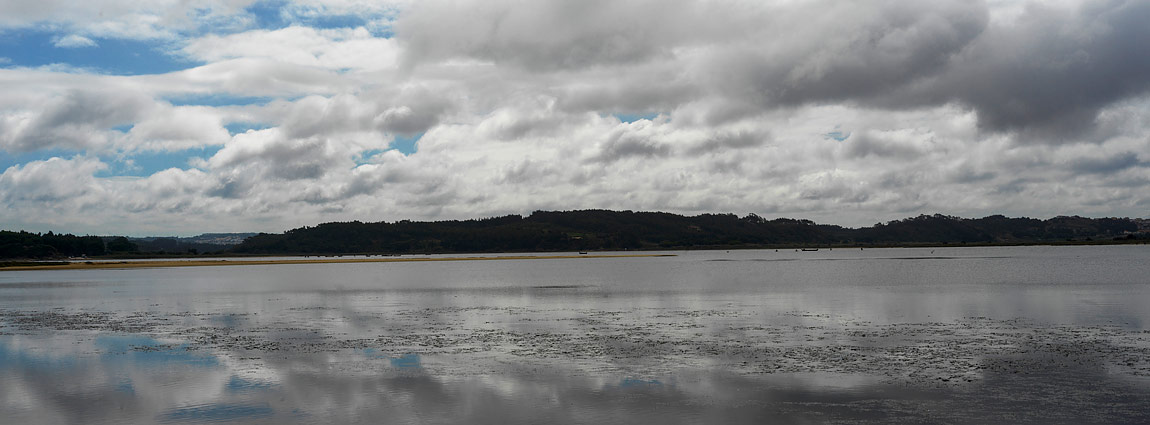The Obidos lagoon, in Portuguese Estremadura, with a total area of around 17 square kilometres and an average water depth of two metres, is an important coastal ecosystem. Fed with fresh water by several streams, the lagoon communicates with the sea through a sand channel.
This channel must be periodically reopened by man to allow fresh seawater to enter the lagoon (twice a day, at high tide), preventing it from becoming a swamp. Indeed the flow of the freshwater streams that feed the lagoon has been decreasing due to its use in agriculture. There is a salinity gradient in the water lagoon, higher near the channel that communicates with the sea and lower in the deeper zones of the lagoon.
Fishing and shellfish (bivalve molluscs, in particular, cockles) collecting and tourism are the most important economic activities. One early morning in August, walking along the lagoon's shores on a calm and clear day with scattered clouds, I was surprised by a beautiful landscape I tried to capture in this image, taken with a Hasselblad X1D-50c in crop mode.
I was delighted with the reflection of the clouds in the water, which wasn't perfect just because of the algae that grew on the water's surface. In the background, we can see shellfish catchers standing in the water, grabbing a stick with a wire mesh bag on the end (called "ganchorra" in Portuguese) to remove the bivalves that live in the sand. From my distance, the shellfish gatherers appeared as tiny creatures inside a lake that seemed immense but only about five kilometres in maximum length!


